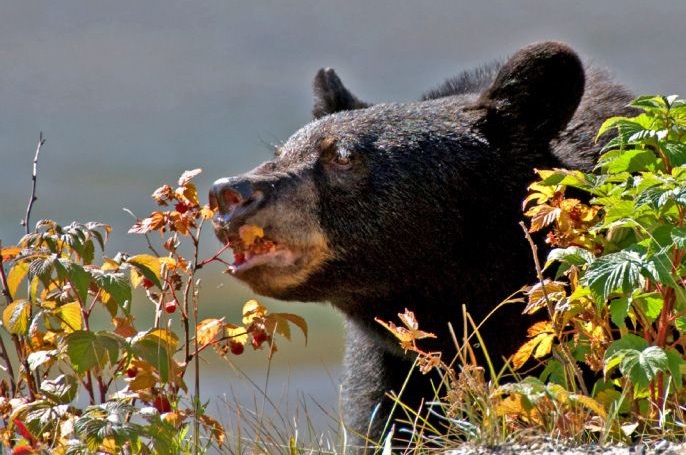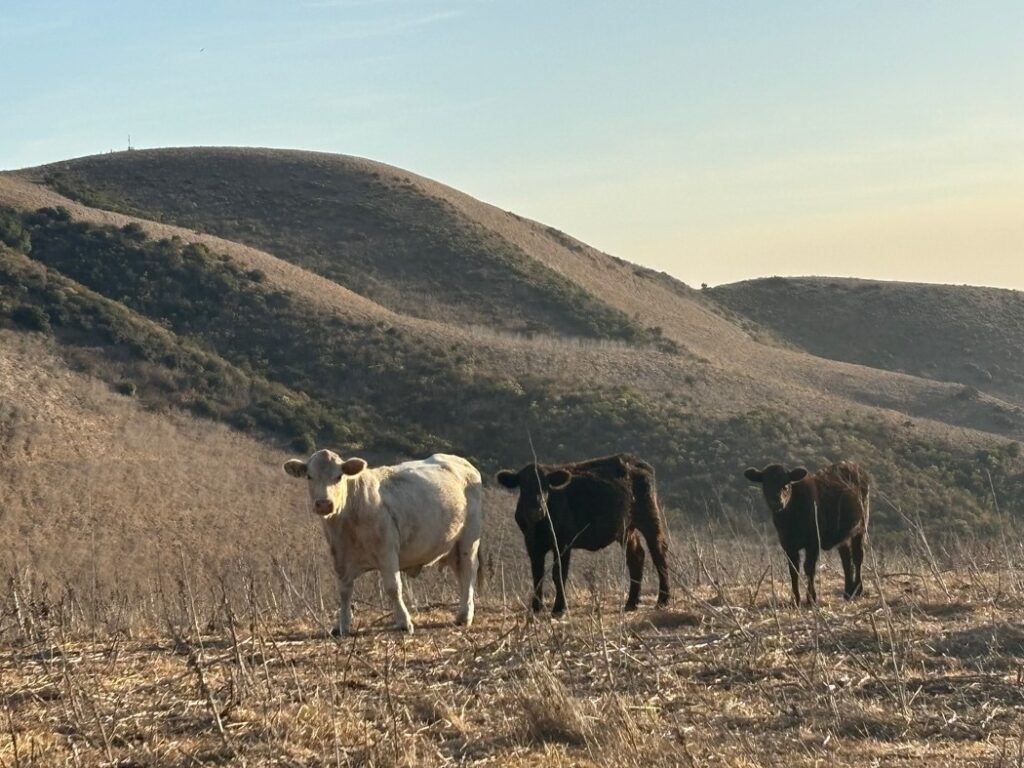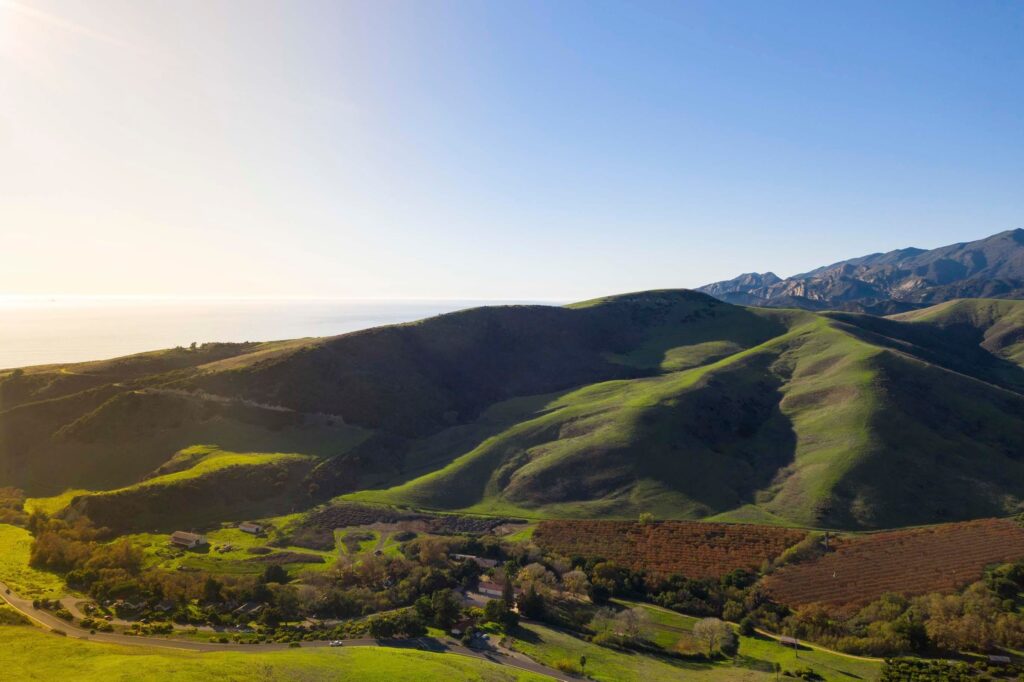
Supporting Regenerative Agriculture and Carbon Sequestration
Regenerative Agricultural Practices at Rancho Tajiguas
GCC’s acquisition of Rancho Tajiguas is an opportunity to protect and celebrate the Gaviota Coast’s agricultural legacy

Rural, working ranches that embody California’s iconic coastal heritage are slowly fading from the landscape, and with them a way of life cherished for its close harmony between land, economy and culture. The Gaviota Coast stands in relative defiance of this trend, with Tajiguas Ranch a foremost example. Intact for over 200 years in its orchard-dotted lowlands, fertile open pasture, and wild, natural canyons and hills, the Ranch sits literally and figuratively in the center of the Gaviota, long predating nearby Refugio State Park and rich with historic connections to founding coastal figures like Hollister, Storke, Ortega and Beato Temi Cucat. The name Tajiguas itself conveys both geographical and agricultural heritage; the Spanish term reflects the “bowl-shaped” Ranch canyon and the “basket” its productive soils supply.
Sustained by the Tajiguas Creek watershed contained almost entirely within its boundaries, Rancho Tajiguas has maintained continuous ranching and farming since at least the 1790s, likely the longest agricultural tradition in Santa Barbara County. Treasures of architectural, agricultural and cultural history exist in abundance at Tajiguas, promising untold opportunities to celebrate, understand and preserve coastal California’s cultural and natural heritage.

Rancho Tajiguas will begin with cover crops to retain moisture and sequester carbon. We’ll also institute a ranch-wide woody material collection system for grinding, composting and reapplication to the land to support regenerative practices. More planning will occur over the next year to develop a ranch property management plan including regenerative agriculture practices.
